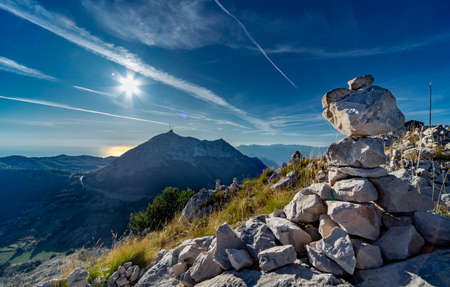Understanding the Importance of a Good Compass
The British landscape is a tapestry woven with moorland, misty hills, and ancient ridges—a place where weather turns on a whim and paths vanish into cloud and bracken. Whether you’re striding across the wind-whipped Cairngorms or picking your way through the undulating fells of the Lake District, hillwalking in the UK demands more than stout boots and waterproofs. Here, nature’s drama unfolds unexpectedly: dense Highland fog can swallow even familiar trails, while rain-slicked slopes test both resolve and direction. In these moments, a reliable compass becomes not just a tool but a silent companion—steadfast when landmarks fade and GPS falters. Unlike following city streets or well-marked tracks, mountain navigation in Britain calls for confidence and calm, guided by the steady needle that always points north. Choosing the right compass is about embracing this unpredictability: it means trusting your instincts, respecting the wildness underfoot, and knowing that even as clouds descend or dusk gathers on the horizon, you have the means to find your way home.
2. Essential Features to Look for in a Compass
When venturing out onto the rugged hills and dramatic fells of the UK, your compass becomes more than just a navigational tool—it is your steadfast companion in the wild. British weather is famously unpredictable, and the terrain can swiftly change from gentle slopes to craggy escarpments shrouded in mist. For these reasons, choosing a compass with the right features is paramount to both safety and confidence under brooding skies.
Clear Baseplate for Map Reading
A clear baseplate is essential for overlaying your compass on an Ordnance Survey map—a staple for hillwalkers across Britain. This transparency allows you to see map details beneath the compass, making it easier to align grid lines and plot bearings accurately. A well-marked ruler or romer scales on the baseplate also help translate distances directly from map to landscape, particularly useful when navigating winding moorland tracks or dense woodland paths.
Luminous Markings for Low-Light Conditions
The British hills are notorious for sudden mists and short daylight hours, especially in autumn and winter. Luminous markings—glow-in-the-dark pointers and bezels—allow you to keep navigating even as dusk falls over the peaks of Snowdonia or the Pennines. These features ensure that you can still orient yourself if cloud descends or your walk stretches into twilight.
Clinometer for Measuring Gradients
While not every compass includes a clinometer, this feature can be invaluable when assessing slope angles in places such as Scotland’s Highlands or the Lake District. Knowing the gradient helps judge avalanche risk in winter or simply aids in planning a safer ascent or descent when faced with steep ground.
Robust, Weather-Resistant Construction
A British hillwalker’s compass must be built to withstand more than just rain; it should endure biting winds, hail, and even being dropped onto rocky trails. Seek out models with scratch-resistant, shatterproof housings and fluid-filled capsules that dampen needle movement for steady readings despite gusty conditions.
Key Compass Features at a Glance
| Feature | Why It Matters for UK Hillwalking |
|---|---|
| Clear Baseplate | Accurate map work; overlays OS maps easily |
| Luminous Markings | Navigating safely in low light and fog |
| Clinometer | Assessing gradients; hazard awareness |
| Robust Construction | Reliability in harsh weather and rough terrain |
Final Thoughts on Essential Compass Features
Your choice of compass should reflect not just where you plan to walk, but how the character of British hills demands resilience and clarity from your kit. Investing in these key features means you’ll be better prepared for whatever adventure—or weather—the uplands throw your way.
![]()
3. Types of Compasses: Finding What Suits UK Terrains
Wandering across the windswept moors of Yorkshire or tracing the sharp ridges of Snowdonia, you quickly learn that not all compasses are created equal. The British countryside, with its patchwork of misty fells, boggy valleys, and bracken-clad hillsides, demands a compass that can keep pace with changing terrain and weather. Understanding the main types of compasses—baseplate, sighting, and thumb—will help you choose a companion fit for your adventures.
Baseplate Compasses: The Versatile Classic
The baseplate compass is beloved by hillwalkers across Britain for good reason. Its clear, flat base overlays Ordnance Survey maps perfectly, allowing you to plot bearings with precision as you weave between stone walls and winding becks. In the Lake District or the Cairngorms, where paths can vanish beneath heather and fog rolls in without warning, the baseplate’s straightforward design offers clarity when you need it most.
Sighting Compasses: Precision for Rugged Peaks
For those who venture onto exposed ridges or navigate through complex mountain terrain—think Scotland’s wild Cuillin or the craggy heights of the Brecon Beacons—a sighting compass may become an indispensable ally. With its mirror or prism system, it enables accurate bearings on distant tors and summits even in swirling mist. This added precision is a boon when a few degrees could make all the difference between reaching a safe path or wandering into marshy ground.
Thumb Compasses: Swift Movement Across Open Ground
Though often seen at orienteering events and less common among traditional hillwalkers, thumb compasses have their place on Britain’s open moors and grassy plateaus. Worn on your thumb, they allow quick glances while moving briskly over unmarked ground—ideal if you’re racing daylight across Dartmoor or navigating featureless stretches where every moment counts. While they lack some navigational features found in baseplate models, their speed can be invaluable on long crossings.
Matching Compass to Landscape
Choosing the right compass isn’t just about preference; it’s about matching your tool to the landscape’s mood and challenge. The rolling green dales and ancient forest tracks ask for reliability and clarity; jagged peaks demand pinpoint accuracy; endless moorland rewards swift decision-making. By reflecting on where your boots will take you—and how each type of compass aligns with Britain’s varied terrain—you’ll find not just a navigation aid but a trusted guide through every twist and turn of the wild UK outdoors.
4. Reliable Brands and Local Recommendations
When the British skies turn a brooding grey and the fells disappear into low-hanging mist, your compass becomes more than an accessory—it’s your lifeline. Among seasoned hillwalkers and mountain guides across the UK, certain compass brands have quietly earned a reputation for steadfast reliability, even when the weather takes a wild turn.
Trusted Compass Brands in the UK
Through countless miles of moorland and rugged peaks, walkers have come to trust a handful of brands. Here’s a simple guide to those most often recommended on British fellwalking forums and by Mountain Rescue teams:
| Brand | Popular Models | Why Walkers Trust Them |
|---|---|---|
| Silva | Ranger, Expedition 4 | Renowned for durability and precision; widely used by Mountain Rescue and military groups. |
| Suunto | M-3 G, MC-2 | Accurate bearings with clear markings; robust build ideal for unpredictable British weather. |
| Kasper & Richter | Alpin, Meridian Pro | Reliable European engineering; praised for smooth needle movement in cold conditions. |
| Recta (now part of Suunto) | D.P.M., DP-2 | Loved for compact designs; popular among ultra-light backpackers and day hikers alike. |
The Voice of Experience: Community Advice
Across online forums like UKHillwalking.com or in the quiet warmth of a Lake District pub, certain themes echo again and again. Many recommend compasses with clear baseplates and luminous markings—essential for reading maps during dusk descents or sudden fog. Magnetic declination adjustment is rarely needed in Britain but is appreciated by navigators venturing further afield.
A Word from Mountain Rescue Teams
British Mountain Rescue volunteers often urge walkers to choose models with robust housings, easy-to-read dials, and reliable global needles that settle quickly. The Silva Expedition 4, for instance, is the standard issue for many rescue teams thanks to its clarity under pressure. As one Lake District rescuer put it: “When visibility goes, you need kit that won’t let you down.”
Local Shops and Personal Service Matter Too
Beneath all the talk of brands and features lies another piece of advice: visit your local outdoor shop. Staff there often walk the same hills as you do—and their recommendations are shaped by real-world experience on British ground. Sometimes, it’s their quiet stories of misadventure that lead you to the perfect compass—one you’ll trust when the path ahead disappears into mist.
5. Care, Maintenance, and Troubleshooting in British Weather
British hills are famous for their ever-changing moods—one moment, a golden shaft of sunlight pierces the clouds; the next, a fine mist drifts across the ridge, dampening every surface. Your compass, a steadfast companion in these wild places, deserves careful attention if it is to remain reliable. Here’s how to keep your navigation tool in top condition amidst drizzle, fog, and the chill winds that sweep over moor and fell.
Looking After Your Compass in Wet Weather
Moisture is an inevitable part of hillwalking in the UK. To prevent water ingress or fogging inside the compass capsule, always stow your compass inside a waterproof map case or a zipped pocket when not in use. If your walk takes you through heavy rain or sleet, dry your compass off as soon as possible with a soft cloth—this will protect both the housing and the needle from corrosion and lingering dampness.
Cleaning and Regular Checks
After each outing, give your compass a gentle wipe to remove mud or grit. Check for scratches on the baseplate that might obscure map detail when plotting routes. Spin the compass needle gently to ensure smooth movement—a sluggish or sticking needle could spell trouble on your next adventure. Inspect the bezel for any signs of grit build-up; rotating it under running water can help clear any debris.
Troubleshooting Odd Behaviour on Remote Ridges
If you find yourself atop a lonely ridge and your compass starts behaving oddly—perhaps the needle swings erratically or settles well off north—pause and assess your surroundings. Metallic objects (like ice axes or mobile phones), iron-rich rocks, or even overhead power lines can interfere with the magnetic field. Step several paces away from potential sources of interference before checking again. If issues persist, your compass may have become magnetised incorrectly; this is rare but does happen. In such cases, rely on secondary navigation methods (map reading, natural features) until you return home, where a specialist retailer can demagnetise or recalibrate your compass.
Embracing British Conditions
The wuthering weather that sweeps across Britain’s mountains makes navigation both challenging and rewarding. With a little regular care and mindful troubleshooting, your compass will continue to point true—even when mists close in and skylarks vanish into cloud. Treat it as you would any trusted friend: with respect, patience, and an eye for detail.
6. Compass Skills and Practice: Beyond the Basics
Once you’ve chosen your ideal compass for hillwalking and mountain navigation in the UK, the journey doesn’t end there. The true heart of British hillwalking lies not only in possessing the right gear but in cultivating the skills to use it with confidence. The wild moors of the Peak District, the brooding ridges of Snowdonia, and Scotland’s remote Munros each demand a deep respect for traditional navigation—a practice rooted in self-reliance and quiet perseverance.
Honouring Tradition: The British Ethos of Self-Reliance
On these isles, there’s a proud heritage of heading out onto the fells with nothing more than a trusty map and compass. OS maps, famed for their closely packed contour lines, require patience and practice to read accurately. Learning to interpret these subtle clues from paper to landscape—spotting a knoll or tracing a re-entrant—is as much an art as a science, and regular field practice is essential.
Sharpening Your Senses: Night Navigation & Poor Visibility
The weather in Britain’s uplands is famously fickle. Mist can roll across a ridge in minutes, transforming familiar paths into disorienting grey worlds. Night navigation—moving by compass bearings under moon or cloud—tests even seasoned walkers. Practise simple drills at dusk or on misty days: pacing between landmarks, setting accurate bearings, and measuring distance by counting steps. These skills, honed in safety, become lifelines when visibility drops.
Making It Habitual: Small Steps, Big Confidence
Take every opportunity to practise: follow a bearing over open ground, identify features using contours alone, or navigate without electronic aids for a stretch. Share skills within your walking group; pass on tips around a bothy fire or during a tea break on the hillside. With time, compass work becomes second nature—quietly empowering you to explore further afield with that distinct sense of British self-assurance. Honour tradition by keeping these skills sharp; after all, they are as integral to our hill culture as sturdy boots and waterproofs.


